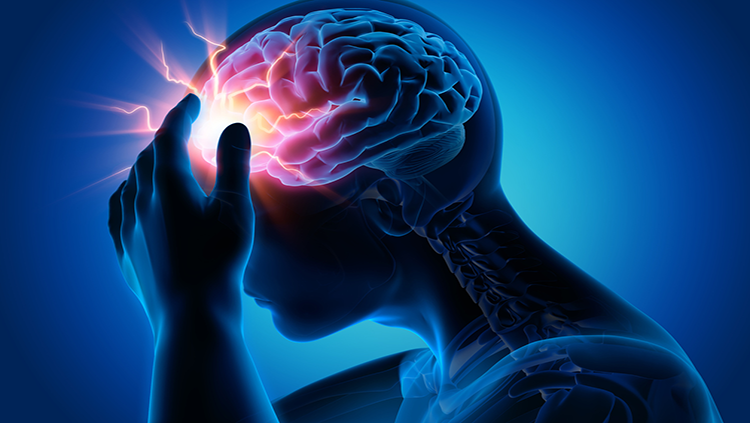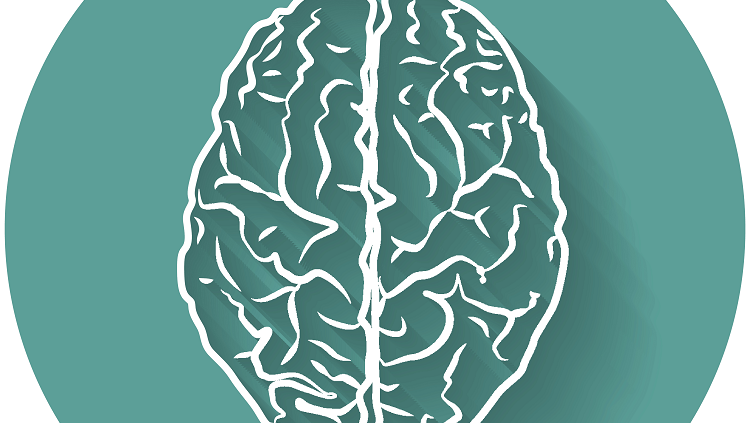Brain damage from a stroke can cause a multitude of language, motor, and cognitive deficits, but none are quite like hemispatial neglect. Sufferers of this disorder lose awareness of one side of their body and the world around them, affecting their senses, motor cognition, and sense of self.
This video is from the 2020 Brain Awareness Video Contest.
Created by Sudharshini Prasanna
CONTENT PROVIDED BY
BrainFacts/SfN
Transcript
It all started with this yellow butterfly. Grandpa and I watched it flutter its wings. Suddenly, rain clouds with lightning and thunder rolled in. And grandpa fell to the ground. He was not struck by lightning but by something far worse. A stroke.
I learned that day that it is the damage to the brain caused by a lack of blood supply. This damage results in various physical and mental conditions and one of these conditions is Hemispatial neglect. In this disorder, patients fail to perceive the existence of one side of their body or space. For most people and my grandpa, it is their left.
Later that week, I learned that the first known cases of hemineglect were observed in 1913 by Herman Zingerle who studied two patients with right-brain injury and noticed that they never drew attention to their left side, indicating one side neglect. In his studies, he mentioned that they seemed to have forgotten the left side of their bodies. Left-side neglect is found in as many as eighty percent of stroke patients, and right-side neglect, although less chronic, is found in as many as forty-four percent of stroke patients.
Damage to the right hemisphere of the brain affects the awareness of the left side, and vice versa, since each hemisphere of the brain receives and relays signals to the opposite sides of the body. Each side of the brain has four lobes. Frontal, parietal, temporal, and occipital. Hemispatial neglect occurs due to damage in the right parietal lobe with the inferior parietal lobule being very involved. In this disorder, the visual system from the retina all the way through the primary visual cortex is undamaged and functional, but the brain fails to attend to the stimuli.
But it’s not only visuals that are affected. Hearing, touch, and the sense of self are also compromised since the location of the clot that caused the stroke could affect what sensory element is disturbed. When patients with left neglect were asked to draw a clock, they wrote all the hours on the right side of the clock showing that even memory of a left side is depreciated. And when they were asked to bisect a line, the patient drew a vertical line either too far right or left depending on their type of neglect.
Another test is the famous Piazza del Duomo assessment where the patients were asked to describe the place. They accurately described the right side of the place but completely ignored the left. Then, researchers asked them to imagine they were standing in the opposite side and this time the patients described the new right side which was previously their left and again ignored the new left side.
When random letters were scattered across a page and patients were asked to circle the “A”s they circled all of them on their right side and ignored the left. The effects of hemineglect are seen in the everyday lives of patients as well. Often, my grandpa will leave food on half of his plate, groom only one side of his face, bump into objects on his neglected side, or not realize that I am standing to his affected side.
This reduces the ability for patients to live independently and even increases the risk of injury. There are promising treatments for hemineglect, but none of them guarantee that the affected side will be restored. My grandpa did various visual exercises such as tracing the red line while reading, drawing. He also tried to use a prism lens and cover one eye. Other treatments include a cast to force the patient to use their neglected side.
Levodopa, a drug used for Parkinson’s disease is a moderately effective drug which helps the motor aspect of hemineglect. After the administration of this drug, some patients respond by being able to point to objects on their left.
Simple measures can be taken at home to reduce the effects of hemineglect. My family and I encouraged grandpa to use his left. I stood on his affected side and attempted to have a conversation. Constant reminders to pay attention to the affected side also improved his awareness.
Hemispatial neglect is a disorder in which there are many unknowns. Understanding hemineglect could restore the other half of the world to people like my grandpa.
“Our ability to perceive the world around us seems so effortless that we tend to take it for granted.”
Thank You.
Also In Injury
Trending
Popular articles on BrainFacts.org

















